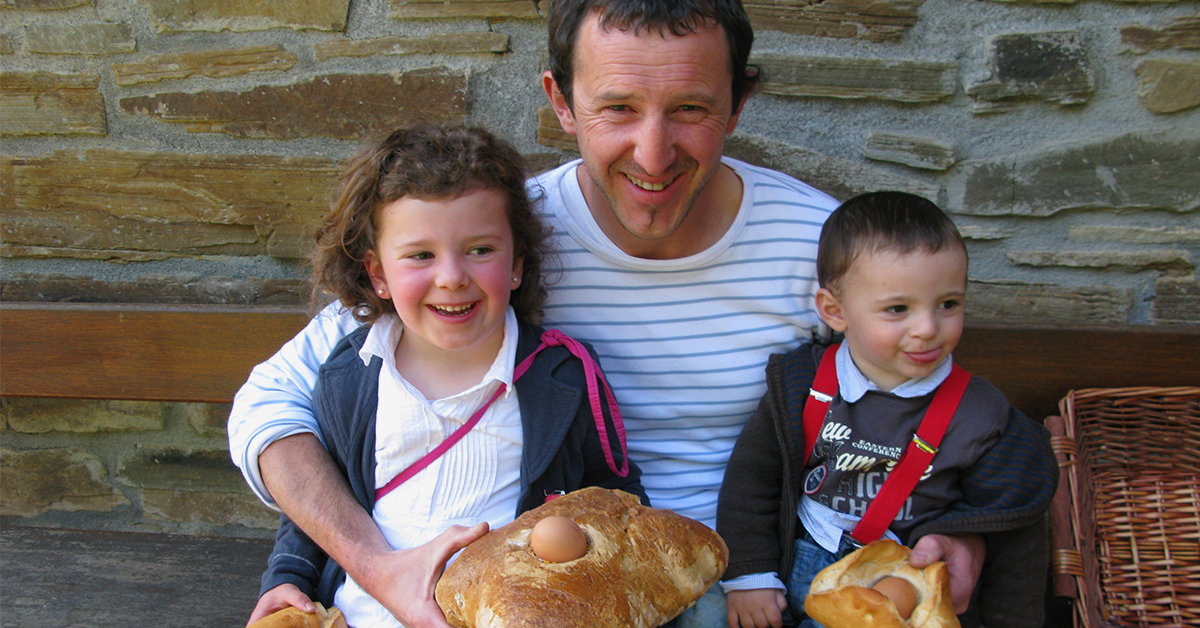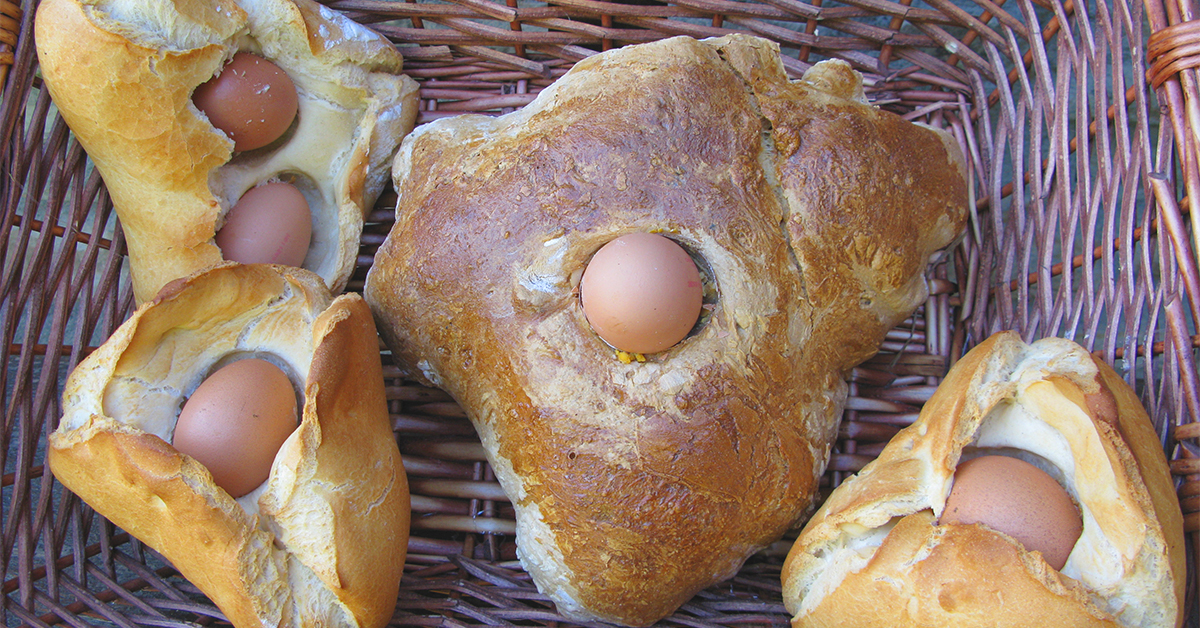Basque ethnography at a glance
Lent, Holy Week and Easter follow on from Carnival. Lent recalls the forty days of prayer and penitence that Jesus spent in the desert. The forty days from Ash Wednesday – on 22 February this year – until Maundy Thursday are traditionally spent fasting and praying. This period ends with Holy Week, which is from Palm Sunday – on 2 April this year – to Easter Sunday; it is the time spent commemorating the Passion of Jesus Christ and builds up to Easter Sunday that celebrates his Resurrection.
During the Easter Vigil on the night from Easter Saturday into Easter Sunday, the Paschal candle is lit and represents Jesus resurrected, and indicates that Christ has come back from death. Alongside the religious services on following day – Easter Sunday and on 9 April this year –, the custom of godparents giving their godchildren a roll with one or several eggs baked into the bread still survives in some places of Euskal Herria and was very widespread in the past. The roll can be circular or triangular and is known as mokotsa in Amorebieta-Etxano and Gorozika, morrokotea and/or mokotsa in Arratia, olatea in Orozko, pazkopile in Busturia, arrautz-opila in Zerain, kaapaxue in Elosu-Bergara, and aitatxi-opil or amatxi-opil in Baztan…
On Easter Monday, the traditional pilgrimage of the cornites is held in Santurtzi. The cornite is a loaf with egg and chorizo that the residents of Santurtzi buy in the local bakers and they take it to eat on Mount Serantes in a festive setting.
Traditionally and in different cultures, the egg has been considered as a symbol of life, of fertility and rebirth. These rolls with eggs and/or Easter eggs possibly represent Christ resurrected. In keeping with Christianity, the custom of gifting an Easter pastry may recall the baptism and express a relationship between the godparent and the godchild.
Giving an Easter egg is a deep-rooted custom in different places of the world: in the United Kingdom, the United States, Central European countries… Godparents give their godchildren a chocolate egg, called mona, in Catalonia as well.
Even though this Easter custom still exists, its decline has coincided with that of baking bread that was a weekly activity at the farmsteads in yesteryear. Every Saturday, each farmstead made the bread for the whole week and on the eve of Easter Sunday, on Easter Saturday, they made the Easter pastries during the weekly bake. The farmstead ovens are now a relic of the past, but there are still industrial bakeries that make the Easter pastry in some locations, such as Santurtzi, Amorebieta-Etxano and in the Valley of Arratia.
Jon Urutxurtu



